Grand gestures: Mark Wallinger gets his hands dirty at Hauser & Wirth
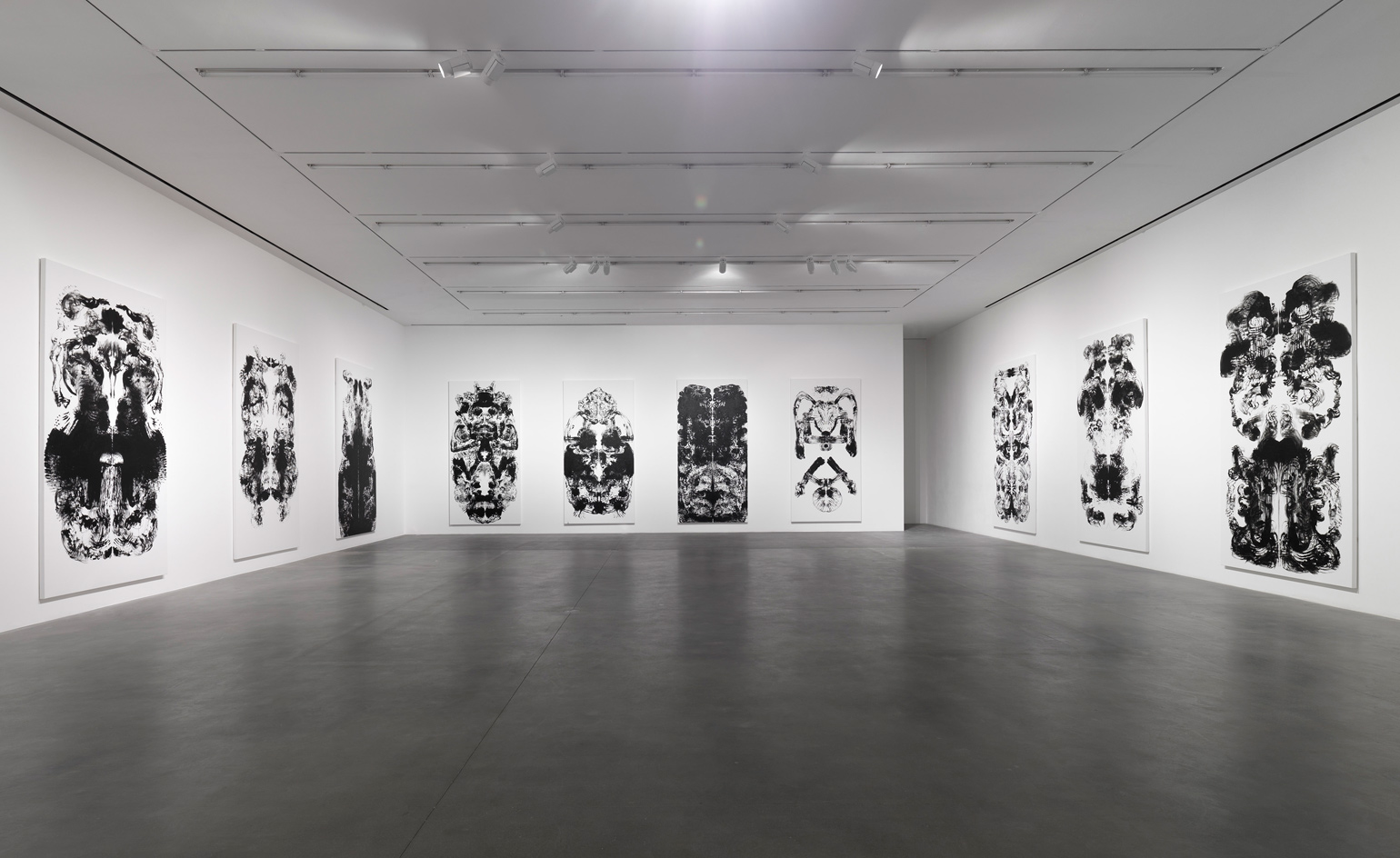
Where’s Wallinger? Everywhere and nowhere, it seems, at the British artist’s latest exhibition. Presenting new paintings and multi-media works in ‘ID’, Hauser & Wirth has given over both of its Savile Row salons in London to Mark Wallinger’s debut solo exhibition at the gallery.
Traces of Wallinger are threaded through the show; like a crime scene we feel compelled to search for clues – some more obvious than others – and by extension the culprit. In the opening work, Ego, 2016, Wallinger recalls Michelangelo’s Creation of Adam with his own hands in a minute pair of iPhone photographs (perhaps joining Alec Soth’s new school of ‘unselfies’).
The artist’s monumental new series of id paintings take pride of place in the North Gallery. Derived from Sigmund Freud’s notion of ‘id’ – the component of our personality structures that fuel our basic, instinctual drives – they bear an overt, immediate resemblance to Rorschach’s inkblots. Less explicitly, they recall the bilateral symmetry of Leonardo da Vinci’s Vitruvian Man in that each canvas is the width of Wallinger’s 1.8m span, and double that again in height.
‘The paintings are made with instinct, sometimes blindly, intuitively and/or in a dialogue,’ explains Wallinger in his exhibition notes. The works’ deceptively impeccable symmetry belies his hands-on approach; the artist covers half of the canvas with his paint-laden hands, before flipping it and continuing. ‘Painting is not usually experienced as a time-based medium. The painting is ready for the viewer when the work is done,’ he adds. ‘But [id] is the antithesis – the painting is a starting point, a cue for the serious work of the viewer to begin.’
Wallinger completes his Freudian trifecta in the South Gallery with another new work, Super Ego, 2016: a mirrored homage to the revolving New Scotland Yard sign. He offers us another clue, another piece of himself: the motorised sculpture is erected directly opposite the West End Central Police Station where the artist was taken in 1986 after an assault during a violent protest.
There’s no escaping Super Ego’s pansophical gaze, a reflection of the ‘ceaseless energy and vigilance of the police’. The omnipresent artist looms large, but invisibly, embodied by his all-seeing totem.
Elsewhere, the artist sends us spinning in a video work presented across four screens – one for each season – tracing a commemorative oak tree at the centre of a roundabout in Barkingside. Wallinger circles around it in his car, capturing it on an iPhone Blu-Tacked to the window. It’s another chapter in his autobiographical show – it was the first roundabout he tackled as a learner driver. Round and round we go, as Wallinger pulls us into his orbit.
At last, we catch up to Wallinger, now in the role of flâneur, in Shadow Walker, 2011 – or so he has us believe. The artist remains ever elusive and, like Peter Pan, we are left chasing a shadow.
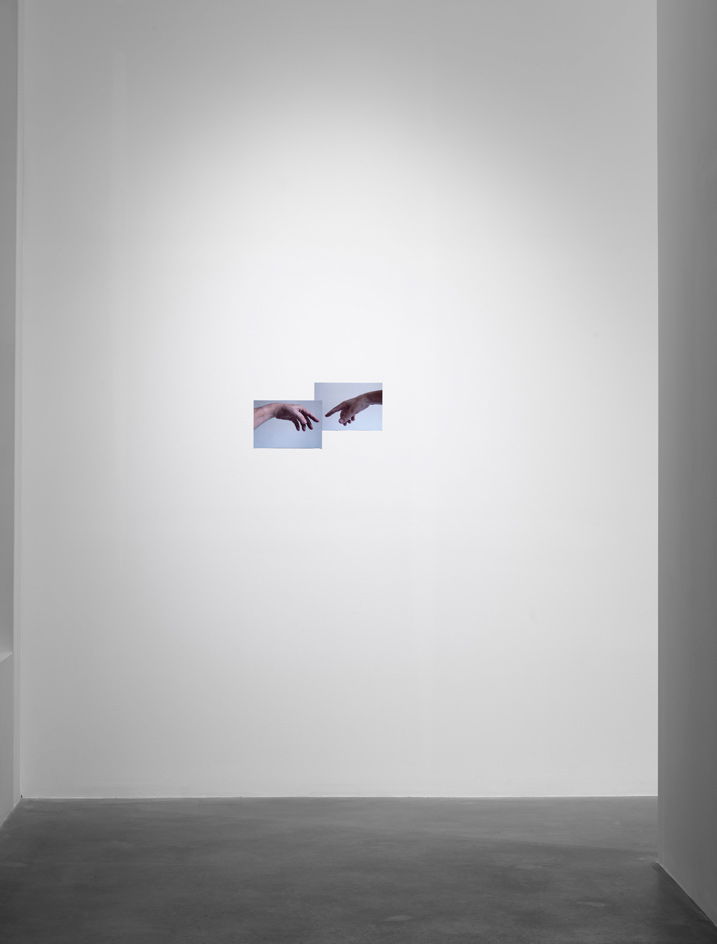
The exhibition opens with Ego, 2016, a playful riff on Michelangelo's Creation of Adam. Two iPhone photographs depict the hands of their creator (that's Wallinger)
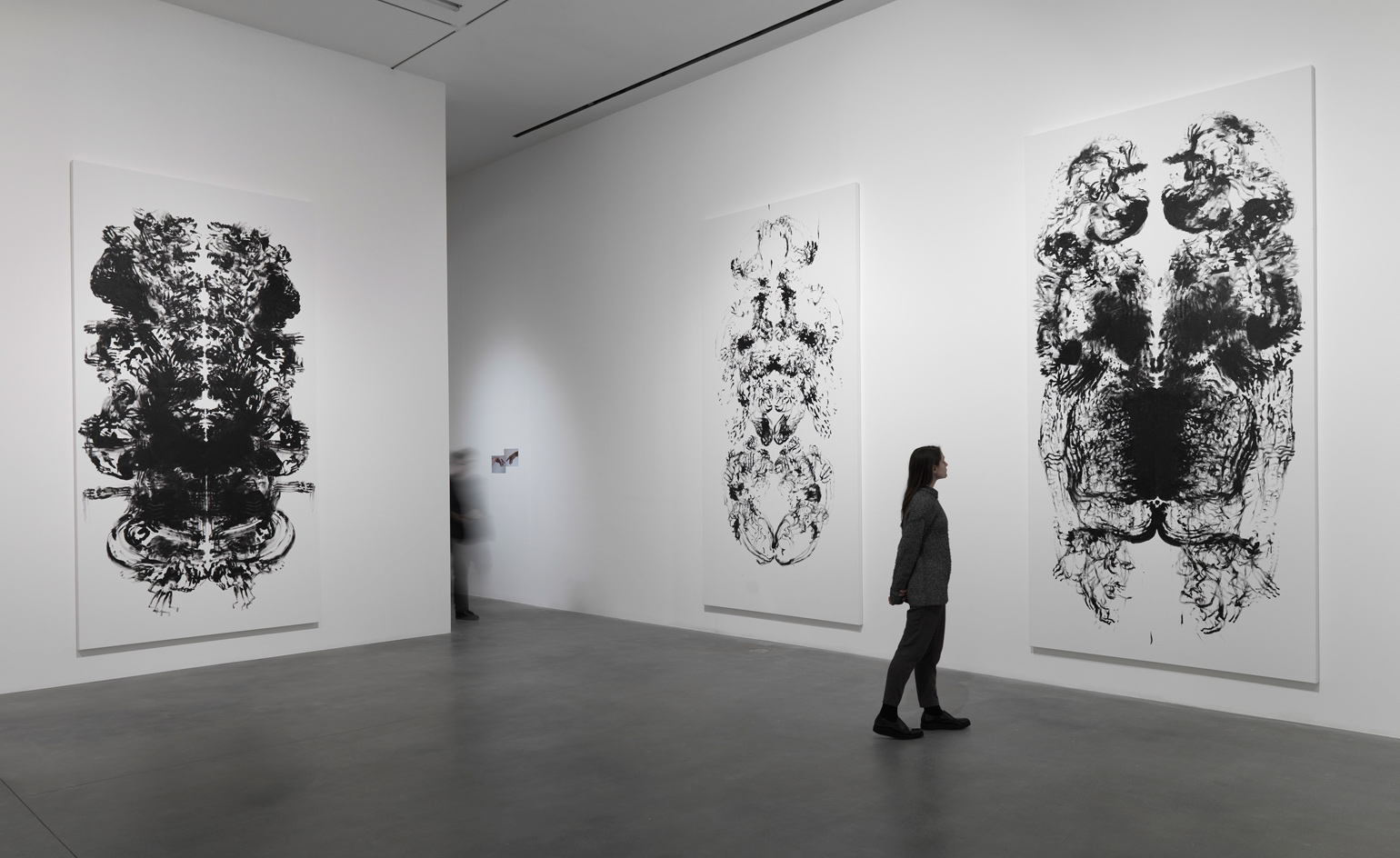
The remainder of the North Gallery is devoted to a new body of work – the monumental id paintings – in which Wallinger created symmetrical gestures in paint using his hands
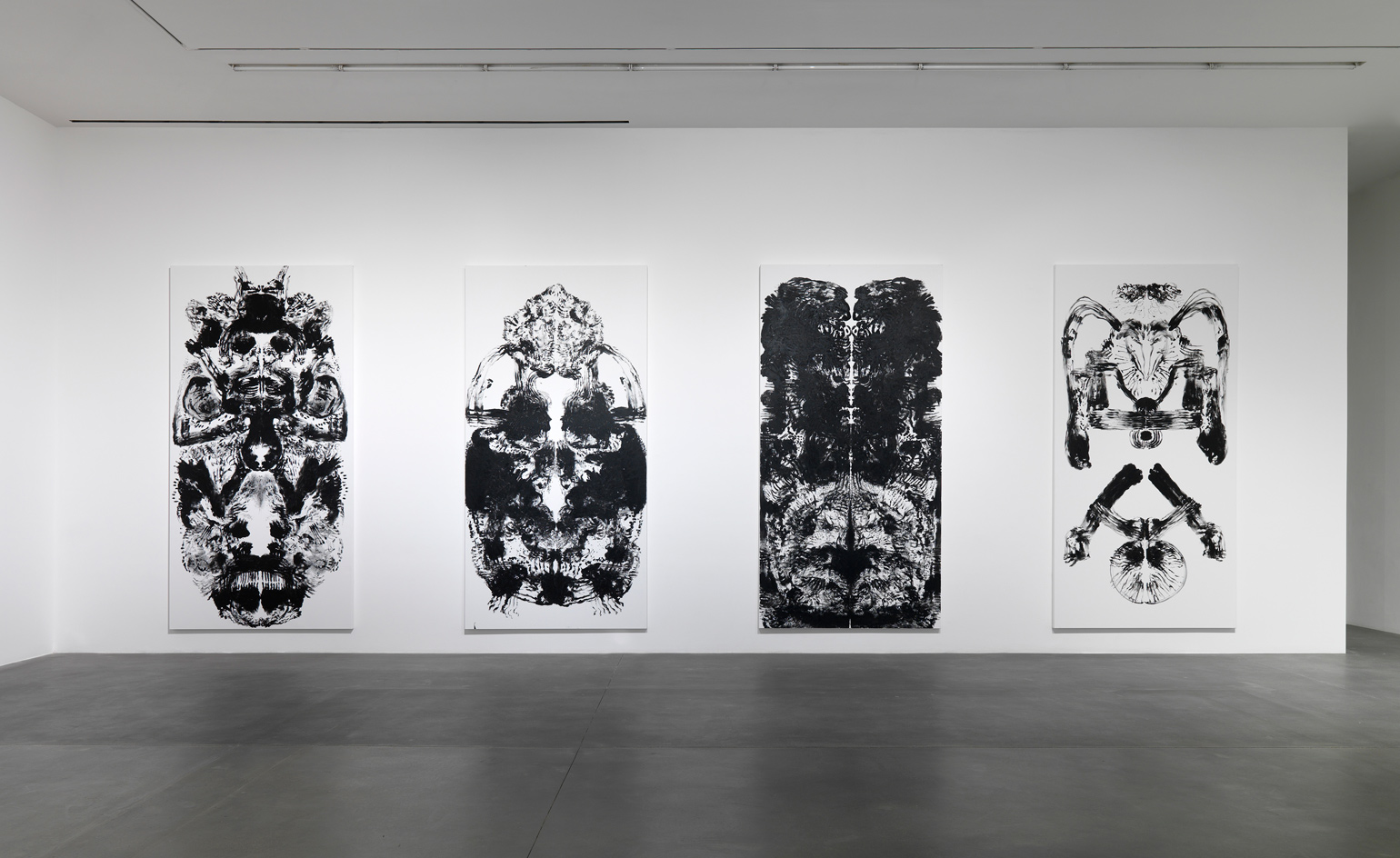
His height forms the basis of the canvas size, as each is the width of Wallinger’s 1.8m span, and double that again in height, recalling the bilateral symmetry of Leonardo da Vinci's Vitruvian Man
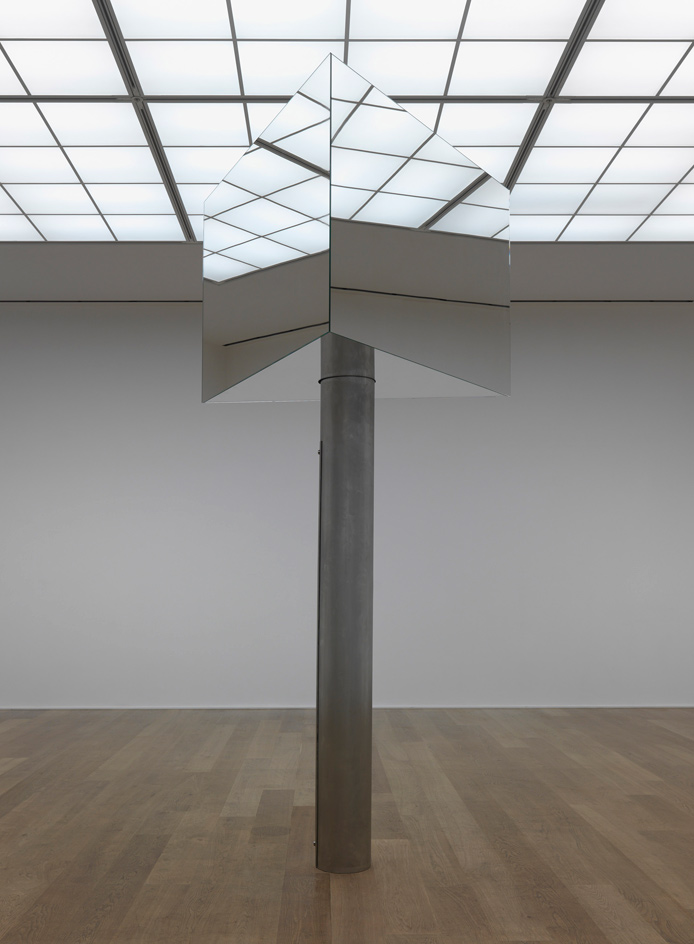
In the South Gallery, Superego, 2016, is a rotating mirrored installation inspired by the revolving New Scotland Yard sign
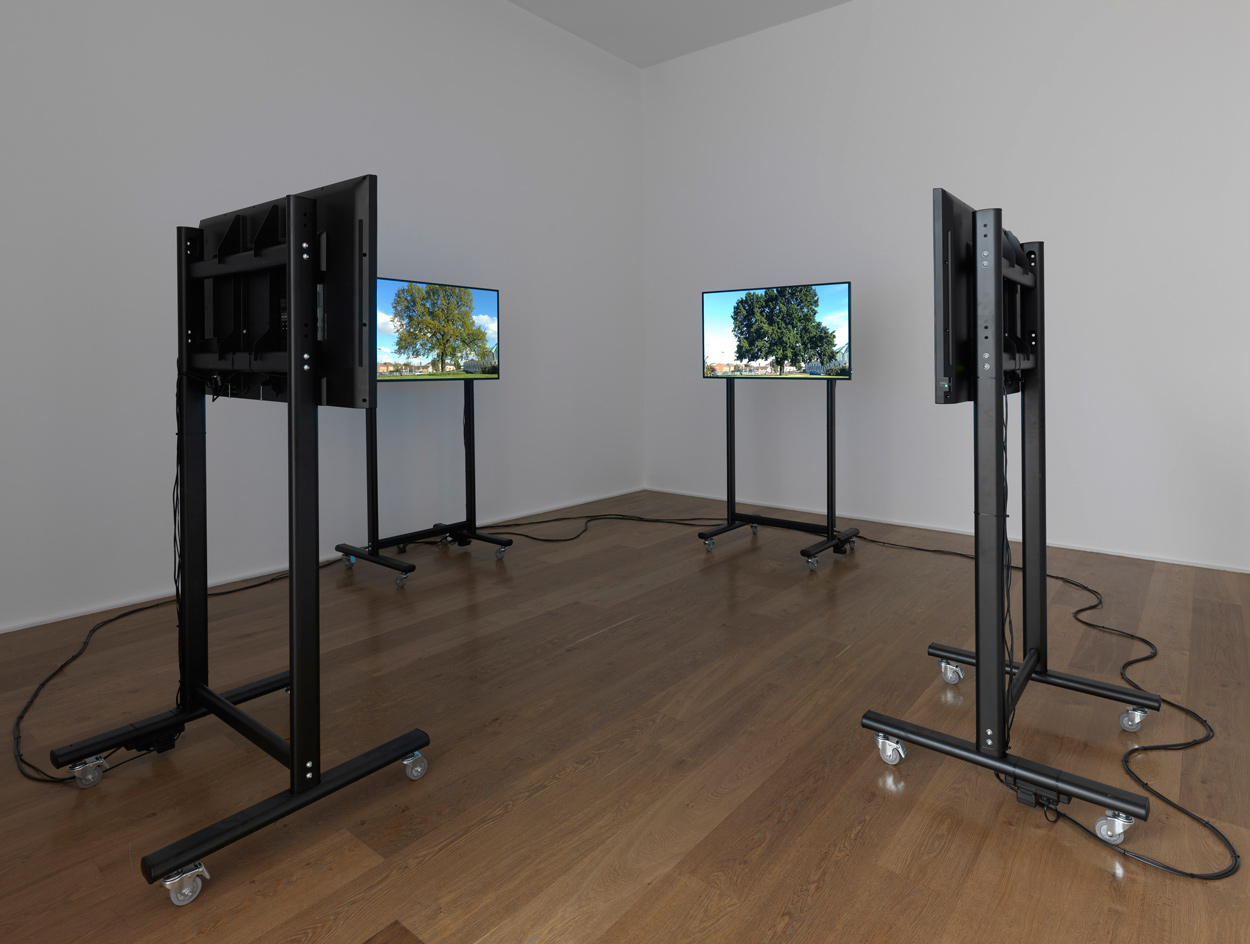
Orrery, 2016, is a video work presented across four screens – one for each season – tracing a commemorative oak tree at the centre of a roundabout in Barkingside as Wallinger circles around it
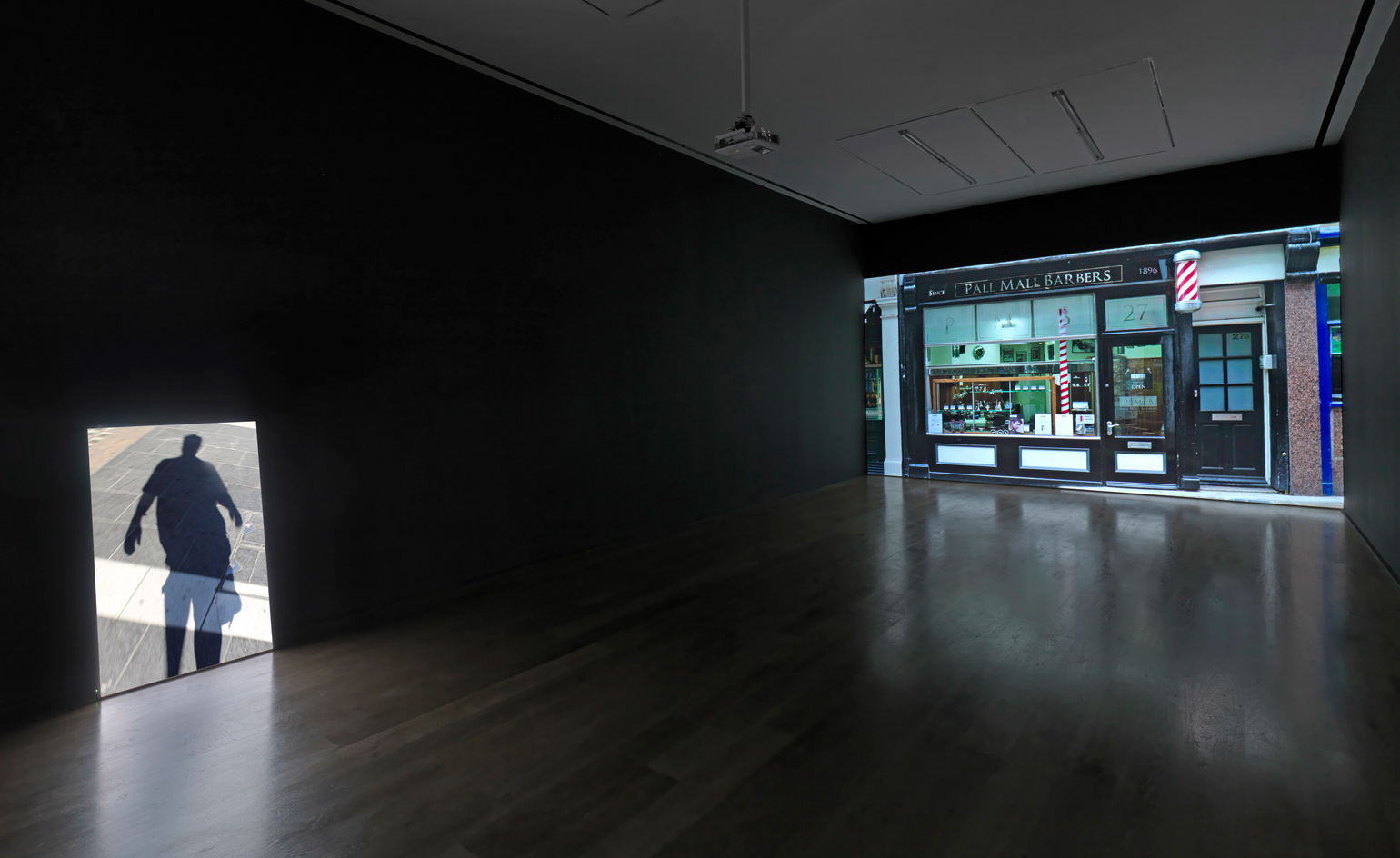
The artist captures his shadow along Shaftesbury Avenue in Shadow Walker (left), 2011, while Ever Since (right), 2012, is a seemingly endless, life-sized projection of a barber's shop front
INFORMATION
‘ID’ is on view until 7 May. For more information, visit the Hauser & Wirth website
Photography: Ken Adlard. Images copyright Mark Wallinger. Courtesy of the artist and Hauser & Wirth
ADDRESS
Hauser & Wirth
23 Savile Row
London, W1S 2ET
Receive our daily digest of inspiration, escapism and design stories from around the world direct to your inbox.
-
 Eclectic and colourful, Charlie Ferrer’s home reflects the interior designer’s personal and professional evolution
Eclectic and colourful, Charlie Ferrer’s home reflects the interior designer’s personal and professional evolutionThe New York interior designer invites us into his new Greenwich Village home: come on in
-
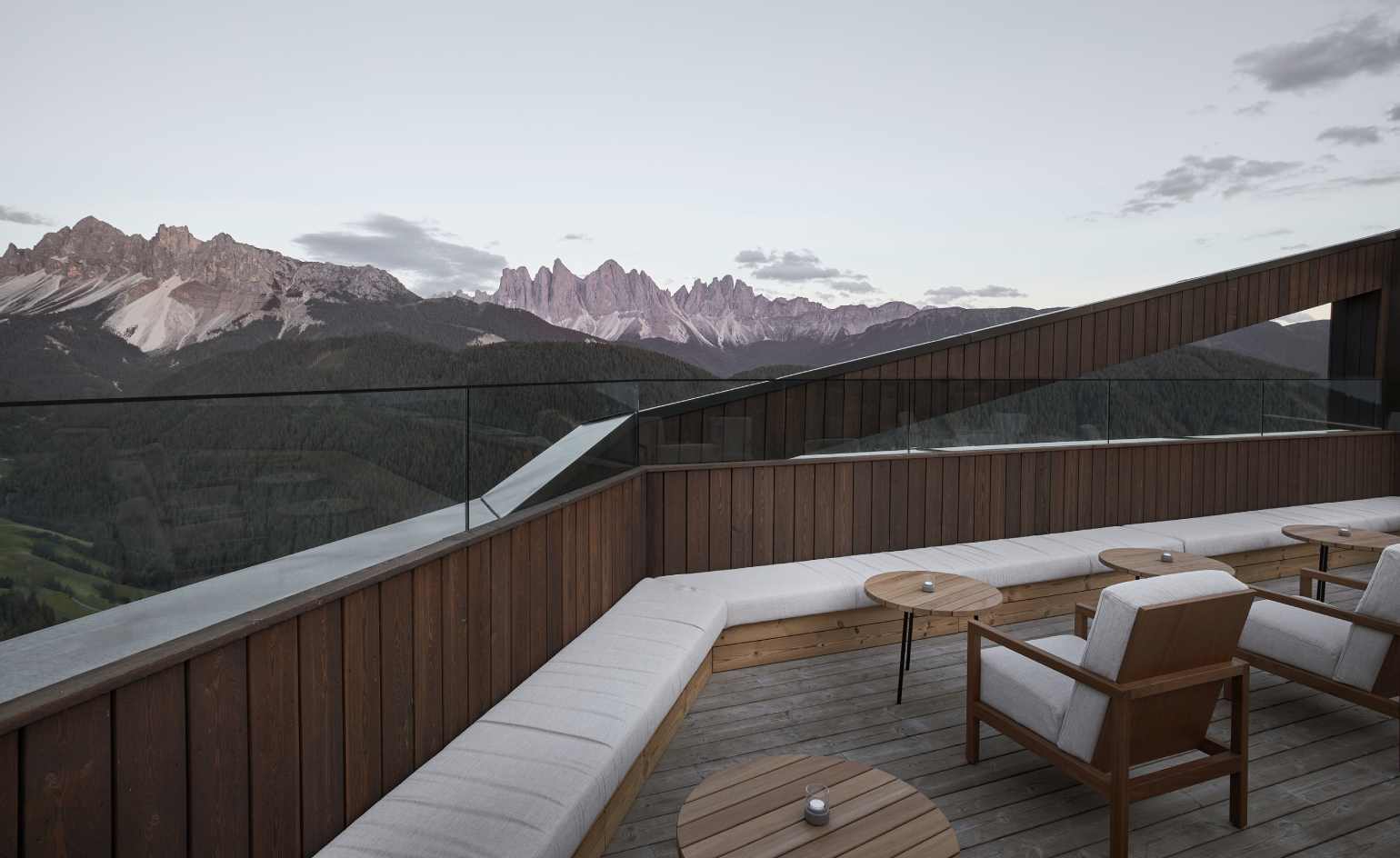 Heading to the 2026 Winter Olympic Games? Don’t miss these stops along the way
Heading to the 2026 Winter Olympic Games? Don’t miss these stops along the wayAs the anticipated winter games draw near, Wallpaper*’s Milan editor, Laura May Todd, shares where to stay, eat, drink and relax in the Dolomites
-
 Step inside this resilient, river-facing cabin for a life with ‘less stuff’
Step inside this resilient, river-facing cabin for a life with ‘less stuff’A tough little cabin designed by architects Wittman Estes, with a big view of the Pacific Northwest's Wenatchee River, is the perfect cosy retreat
-
 Out of office: The Wallpaper* editors’ picks of the week
Out of office: The Wallpaper* editors’ picks of the weekIt’s wet, windy and wintry and, this week, the Wallpaper* team craved moments of escape. We found it in memories of the Mediterranean, flavours of Mexico, and immersions in the worlds of music and art
-
 Each mundane object tells a story at Pace’s tribute to the everyday
Each mundane object tells a story at Pace’s tribute to the everydayIn a group exhibition, ‘Monument to the Unimportant’, artists give the seemingly insignificant – from discarded clothes to weeds in cracks – a longer look
-
 Out of office: The Wallpaper* editors’ picks of the week
Out of office: The Wallpaper* editors’ picks of the weekThis week, the Wallpaper* team had its finger on the pulse of architecture, interiors and fashion – while also scooping the latest on the Radiohead reunion and London’s buzziest pizza
-
 Out of office: The Wallpaper* editors’ picks of the week
Out of office: The Wallpaper* editors’ picks of the weekIt’s been a week of escapism: daydreams of Ghana sparked by lively local projects, glimpses of Tokyo on nostalgic film rolls, and a charming foray into the heart of Christmas as the festive season kicks off in earnest
-
 Wes Anderson at the Design Museum celebrates an obsessive attention to detail
Wes Anderson at the Design Museum celebrates an obsessive attention to detail‘Wes Anderson: The Archives’ pays tribute to the American film director’s career – expect props and puppets aplenty in this comprehensive London retrospective
-
 Meet Eva Helene Pade, the emerging artist redefining figurative painting
Meet Eva Helene Pade, the emerging artist redefining figurative paintingPade’s dreamlike figures in a crowd are currently on show at Thaddaeus Ropac London; she tells us about her need ‘to capture movements especially’
-
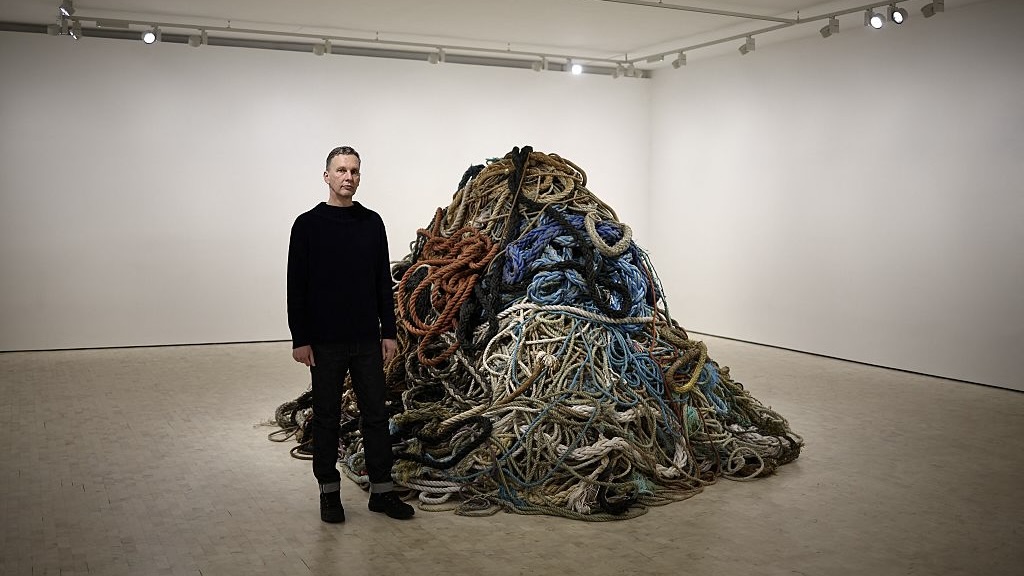 David Shrigley is quite literally asking for money for old rope (£1 million, to be precise)
David Shrigley is quite literally asking for money for old rope (£1 million, to be precise)The Turner Prize-nominated artist has filled a London gallery with ten tonnes of discarded rope, priced at £1 million, slyly questioning the arbitrariness of artistic value
-
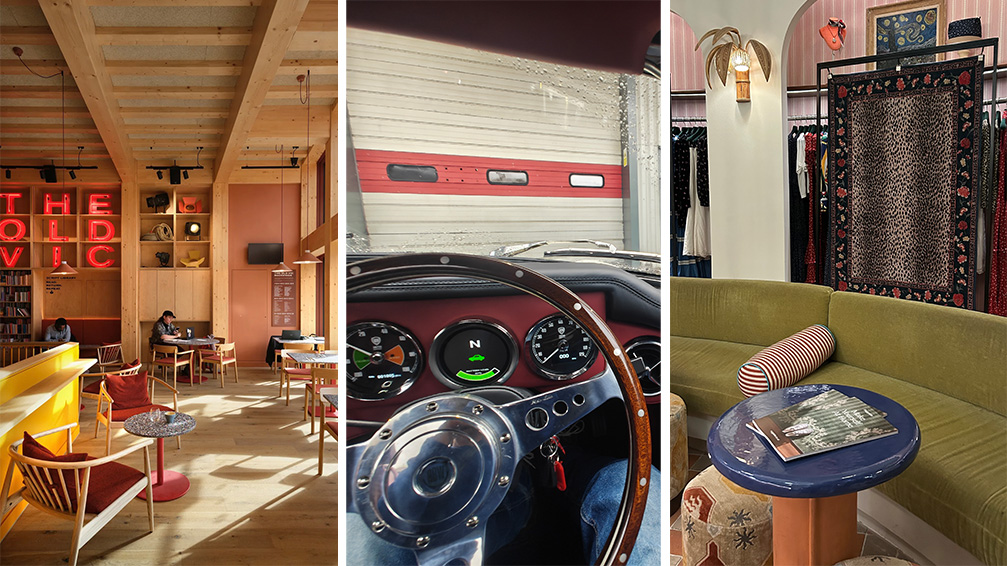 Out of office: The Wallpaper* editors’ picks of the week
Out of office: The Wallpaper* editors’ picks of the weekThe rain is falling, the nights are closing in, and it’s still a bit too early to get excited for Christmas, but this week, the Wallpaper* team brought warmth to the gloom with cosy interiors, good books, and a Hebridean dram